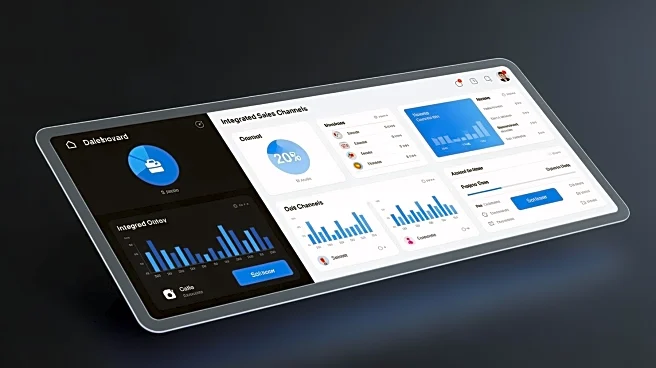What's Happening?
Mobile marketers are increasingly leveraging first-party data to enhance app marketing strategies through segmentation. This approach involves categorizing users based on their behavior to deliver personalized
and relevant messaging, thereby increasing engagement and conversion rates. The article outlines six key segmentation tips, including defining audience segments that align with app goals, setting activity windows that match buying cycles, and using engagement signals beyond purchase history. These strategies aim to optimize app marketing campaigns by targeting users at the right moment with tailored creatives and messaging.
Why It's Important?
The significance of these segmentation strategies lies in their potential to transform app marketing efforts by increasing user engagement and maximizing return on ad spend (ROAS). By understanding user behavior and preferences, marketers can create more effective campaigns that resonate with different user groups, such as cart abandoners or lapsed users. This personalized approach not only boosts short-term conversions but also enhances user lifetime value (LTV) by fostering stronger relationships and loyalty. As the app marketplace becomes increasingly competitive, precision in targeting and messaging can be the key to driving action and retaining users.
What's Next?
Marketers are encouraged to regularly refresh their segments to ensure accuracy and effectiveness, as user behavior and external factors can change over time. Continuous testing and refinement of segmentation strategies will help maintain strong performance and adapt to evolving market conditions. Additionally, avoiding common pitfalls such as over-segmentation and static audience definitions will be crucial in maintaining the effectiveness of these strategies. By combining creative testing with behavioral segmentation, marketers can optimize their campaigns and achieve a balance between acquisition and re-engagement.
Beyond the Headlines
The deeper implications of these segmentation strategies include ethical considerations around data privacy and the responsible use of first-party data. As marketers gain access to detailed user insights, it is essential to ensure that data is handled transparently and securely. Furthermore, the cultural shift towards personalized marketing reflects broader trends in consumer expectations for tailored experiences. This approach not only meets current demands but also sets the stage for long-term shifts in marketing practices, emphasizing the importance of relevance and personalization in digital interactions.











